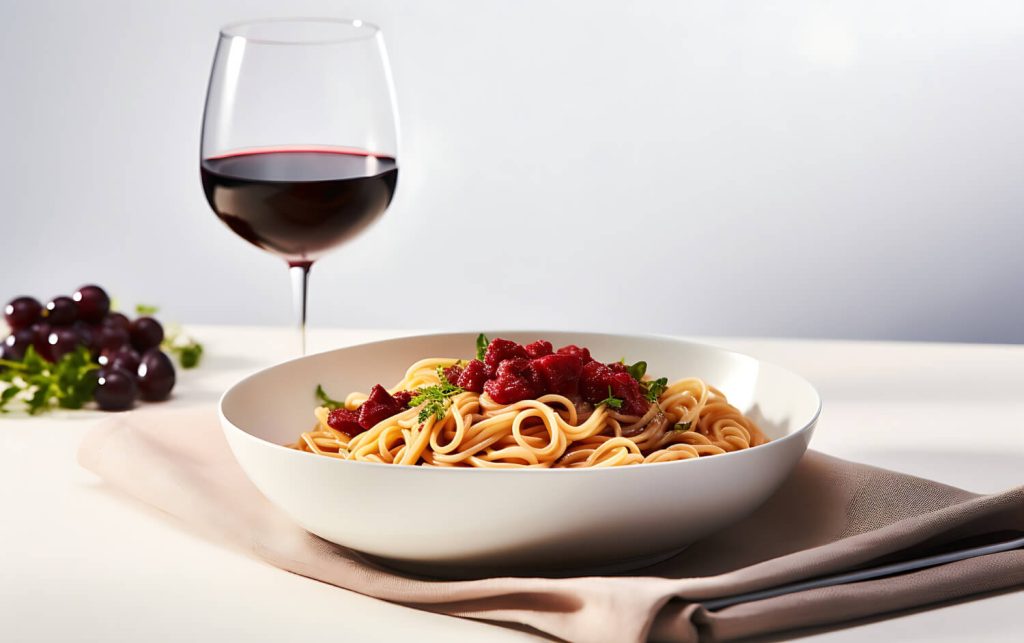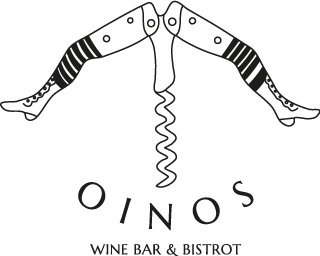Italian cuisine is based on centuries-old traditions and a rich flavour palette, dominated by fresh, local ingredients and refined flavour combinations. The diversity of Italian cuisine is presented by region, from pasta-based dishes to seafood and meat specialities. For each dish, the choice of the right wine is of paramount importance, complementing the taste experience and making the gastronomic experience even more complete.
Italian wines are also varied, and each region boasts its own distinctive wine styles. The richer, tannic character of Chianti can be as dominant as a light Pinot Grigio or a full-bodied Barolo. Pairing wines and food in harmony not only enhances the enjoyment of a delicious meal, but can also elevate the dining experience; a good pairing brings out the best of the food and wine, making the meal truly unforgettable.
The pairing should take into account the flavour intensity, texture and even the cooking method and spices used. The aim is to achieve balance and harmony, and there are countless ways to find the ideal combination. Whether it’s a refreshing white wine to accompany a light seafood dish or a red wine that goes perfectly with a heavier meat-based dish, Italian gastronomy offers a wide range of delicious and aesthetic wine and food pairings.

The basics of Italian cuisine
Italy’s gastronomy is based on simplicity and fresh, quality ingredients, with a strong emphasis on spices and rich flavours, and Italian wines are an essential part of the meal.
Basic dishes and main ingredients
Italian cuisine uses a rich variety of meat, fish, vegetables and mushrooms, whether it’s pizza, pasta or risotto. Spaghetti, lasagne and carbonara are among the most celebrated pasta dishes. Basic ingredients include tomatoes, eggs, olive oil and various cheeses such as mozzarella.
Seasoning and culinary traditions
The traditional use of basil, oregano and other spices in seasoning gives Italian dishes their characteristic, yet spicy flavour. Italian gastronomic traditions faithfully reflect the combination of simplicity and richness of seasoning.
Famous Italian dishes
Famous Italian dishes include tiramisu, bistecca alla fiorentina and antipasto as an appetizer. These dishes are all part of the richness of flavour that Italian cuisine has to offer.
Differences between Tuscan and Sicilian cuisine
Tuscan cuisine reflects the simplicity of the countryside and traditional meat dishes, while Sicilian cuisine emphasises the importance of spices and fish dishes, due to Arab and Greek influences.
Typical serving and eating habits
An Italian-style meal consists of several courses: a starter (antipasto), pasta or risotto, main course, salad, and often dessert. Serving is carefully designed to ensure harmony between the courses, a balance of flavours and the right pairing of wines.
Pairing wines and food in harmony
Choosing the right wine to accompany your meal can significantly enhance the gastronomic experience. Below we present the flavours and varieties of wines, as well as the principles of pairing in the context of Italian cuisine.
Wine types and typical flavours
Italian wines, such as Merlot or Chianti, carry different aromas and full-bodied flavours that have a significant influence on food pairings. The soft, fruity character of Merlot can be complemented by sweet and savoury flavours, such as a dish with Parmesan cheese. Acidic Chardonnay is a great match for pasta dishes enriched with vegetables.
Types of wines and their pairing with food
The table below shows some typical Italian wine and food pairings:
| Wine type | Food |
| Sangiovese | Tomato-based pasta dishes, sausage |
| Blue Franc | Spicy dishes, smoky dishes |
| Cabernet Sauvignon | Complex, heavy, succulent meat dishes |
| Sweet white wines | Desserts, such as fruit cakes |
Choose the perfect pairing based on the acidity and spiciness of the wines and the food pairings.
Advanced pairing techniques
Advanced techniques require a deeper understanding of the complex flavours of wines and food. For example, the delicate texture of Pinot Noir can be accentuated by acidic flavours such as tomato or a spicy stew. Wine aromas, such as spicy, fruity or even oaky notes, can determine the choice.
Pairing rules and combinations
Pairing rules can ensure that wine and food are in harmony. The rest should be taken into account:
- Acidity: sour wines like Chianti go well with high acidity foods, such as a fresh Piedmont tomato salad.
- Full-bodied: heavy, full-bodied wines like Cabernet Sauvignon require heavier food.
- Taste harmony: the same base flavours, such as sweet or spicy, complement each other well.
With the above in mind, Italian wine and food pairing can enrich the taste experience.
Italian flair at Oinos restaurant
The heart and soul of the Oinos restaurant is filled with a sense of Italian culinary tradition. Both the love of Italian food and its sophisticated pairing with wine are displayed, creating a truly Mediterranean atmosphere.
The menu: the Oinos menu offers authentic Italian dishes such as fresh seafood, handmade pasta dishes and slow-roasted meats. All dishes are accompanied by a carefully selected selection of Italian wines.
Wine selection: the wine list pays particular attention to the diversity of wines from the different Italian regions. Here, each selection reflects the unique characteristics of the terroir.
The décor of the restaurant also combines elements from different parts of Italy, from rustic Tuscan furniture to modern Roman decor, while guests can enjoy their meals in an elegant and pleasant setting. The Italian gastronomic experience that guests of Oinos will have is not only a treat for the taste buds, but also a journey through the landscapes and flavours of Italy. The restaurant offers all this with the utmost attention and care.

